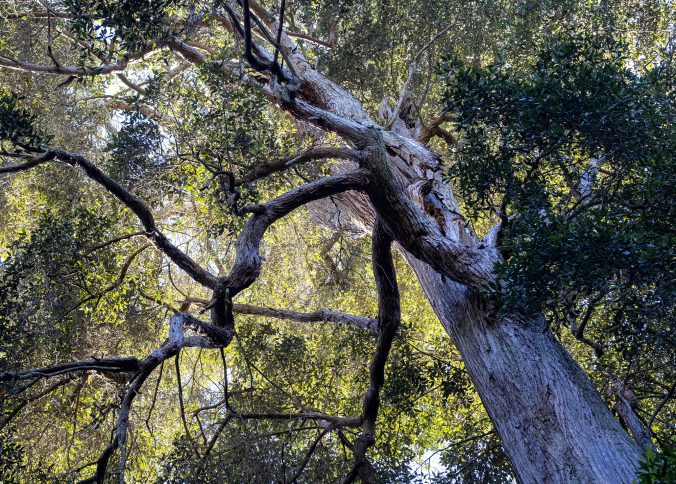Turpentine timber is durable in exposed positions and is highly resistant to damage by fire and attack by white ants and marine borers.
Another preeminent Australian tree is turpentine, renowned throughout the world for its durability, especially for use for heavy construction for jetties, wharves and in other seawater environments.
Turpentine is a large tree usually 40-45 metres in height in 1.0-1.3 metres in diameter, but not uncommonly attaining 55 metres in height in a from 2.0-2.5 metres in diameter on optimum sites. The trunk is straight and of good form with little taper up to two-thirds of the tree height.
The tree extends over nearly 20 degrees of latitude in coastal eastern Australia from the Atherton Plateau in northern Queensland to near Bateman’s Bay in Southern NSW with the main occurrence in northern NSW and southern Queensland. It rarely occurs more than 80-150 kms from the sea, whilst the altitudinal range is from near sea level to less than 300 metres in southern NSW to about 900 metres in northern Queensland.
The species extends from temperate to tropical regions, with its most common occurrence in subtropical areas. Near sea level frosts are absent but at higher altitudes in both the southern and northern part of its range 5-20 frosts occur a year. The annual rainfall is 800-1500 mm.
Turpentine prefers deep, fertile soils, but grows on a wide range of sites, including moderately poor, but rather steep sandy looms.
Turpentine is most common in mixtures forming a transition between pure rainforest into eucalypt forest. Under these conditions it may be associated with flooded gum, tallowwood and brush box as well as various typical rainforest species.
Turpentine is the preeminent timber in Australia for saltwater pilings, and was formerly used with the bark intact (digital image).
The timber is durable in exposed positions and is also highly resistant to damage by fire and attack by white ants and marine borers. it is the preeminent timber in Australia for saltwater pilings, and was formerly used with the bark intact. Apart from piles, it is used for poles, heavy construction, and house building, as well as special purposes such as bearings and underwater ship planking and sheathing.
Because of the high reputation of its timber in Australia, turpentine has been planted experimentally in a number of countries. However, the results have not been particularly encouraging.
